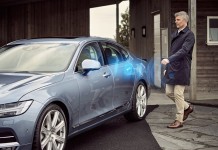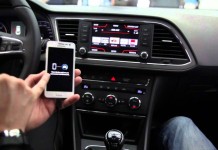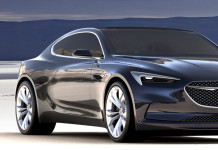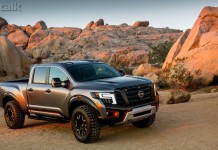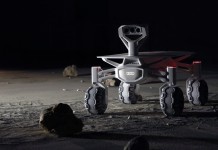DETROIT: NAIAS 2016, Wind River, a global leader in delivering software for the Internet of Things (IoT), has introduced a breakthrough automotive software platform for the command center of the connected car, Wind River Helix™ Cockpit. Cockpit was designed from the ground up to meet the intersecting needs of the automotive and IoT landscapes. Wind River has also updated its software for ISO 26262 certifiable automotive safety-critical applications, Wind River Helix Drive. Cockpit and Drive are the latest offerings under Wind River Helix Chassis.
Helix Chassis incorporates technologies from consumer-oriented embedded devices such as infotainment, telematics, and digital cluster systems; safety-oriented systems such as advanced driver assist systems (ADAS) and autonomous driving systems; and cloud-based development tools and enhancements for the applications.
“The emergence of IoT is pushing automotive systems to become more connected within and outside of the car through the use of software. As such, carmakers must have a strong grasp of the holistic software environment in order to orchestrate a successful vision of the connected car,” said Marques McCammon, general manager of connected vehicles at Wind River. “Wind River Helix Cockpit provides carmakers with the framework to fully own the software environment and realize their vision. By turning to Wind River’s decades of embedded software leadership and rich technology expertise in mission-critical industries such as aerospace and defense, the auto industry can quickly become software savvy and begin their IoT transformation.”
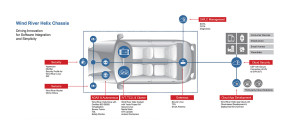 Cockpit is a GENIVI®-aligned, Linux Yocto Project–based software platform that helps customers rapidly develop rich in-vehicle infotainment (IVI), telematics, and automotive instrument cluster systems capable of advanced connectivity features in a secure environment. As a flexible, extensible, and pre-integrated platform that can support a variety of industry hardware and HMI tools, Cockpit provides the framework for a complex IVI system that allows customers to get to market faster. Additionally, Cockpit customers will have access to Wind River Helix App Cloud, a cloud-based software development environment for building IoT applications across multiple development centers.
Cockpit is a GENIVI®-aligned, Linux Yocto Project–based software platform that helps customers rapidly develop rich in-vehicle infotainment (IVI), telematics, and automotive instrument cluster systems capable of advanced connectivity features in a secure environment. As a flexible, extensible, and pre-integrated platform that can support a variety of industry hardware and HMI tools, Cockpit provides the framework for a complex IVI system that allows customers to get to market faster. Additionally, Cockpit customers will have access to Wind River Helix App Cloud, a cloud-based software development environment for building IoT applications across multiple development centers.
Key features for Cockpit include the following:
- Connectivity framework: Integrated connectivity solutions help to extend and bridge the car experience to the IoT devices and landscape, including the cloud.
- Firmware and software over-the-air (OTA) management: Cockpit includes the ability to manage and update software over-the-air throughout its lifecycle.
- Flexible platform: Flexibility in car system design, from consolidated to distributed architecture, allows functional services to be distributed across ECUs.
- Long term support: A secure Linux base from the market leader in commercial embedded Linux allows for extensibility over time with evolving IoT offerings, protocols, and developments.
- Built-in security: Security Profile for Wind River Linux delivers secure data handling from boot to run time.
Additionally, Wind River has updated Drive, previously called Automotive Profile for VxWorks®, to include the latest knowledge and technologies around certification systems for ADAS and autonomous driving use cases. Drive is an AUTOSAR-oriented software offering to help customers develop ISO 26262 certifiable automotive safety-critical applications. Based on VxWorks, the industry-leading real-time operating system (RTOS) for mission-critical software systems, Drive is designed to perform at the highest safety levels to address the growing needs for safe, secure, and certifiable software-driven driving applications.
Given the convergence of vehicle functions within the car and externally for seamless interconnected experiences, growing momentum toward the cloud, autonomous driving innovations, and the ensuing evolving safety ratings and requirements, there is a critical need for a higher level of intelligence and connectivity across vehicle systems. This complicated and interconnected future will rely heavily on advanced software.
To address these complexities, the Helix Chassis portfolio is designed to unite the internal network of the car with the external IoT, and ultimately, to bridge the technology siloes within a vehicle to deliver new business opportunities. Helix Chassis make it possible for data, services, and actions to flow from one environment to another, seamlessly and securely. As a result, it is possible to extract greater insights from the connected car, so that automakers can optimize the space, weight, and power of the vehicle and implement new capabilities, such as autonomous driving, that depend on interconnectivity among diverse software elements. The end result is safer, more efficient cars, a better driving experience, and new sources of brand differentiation and market opportunity.


